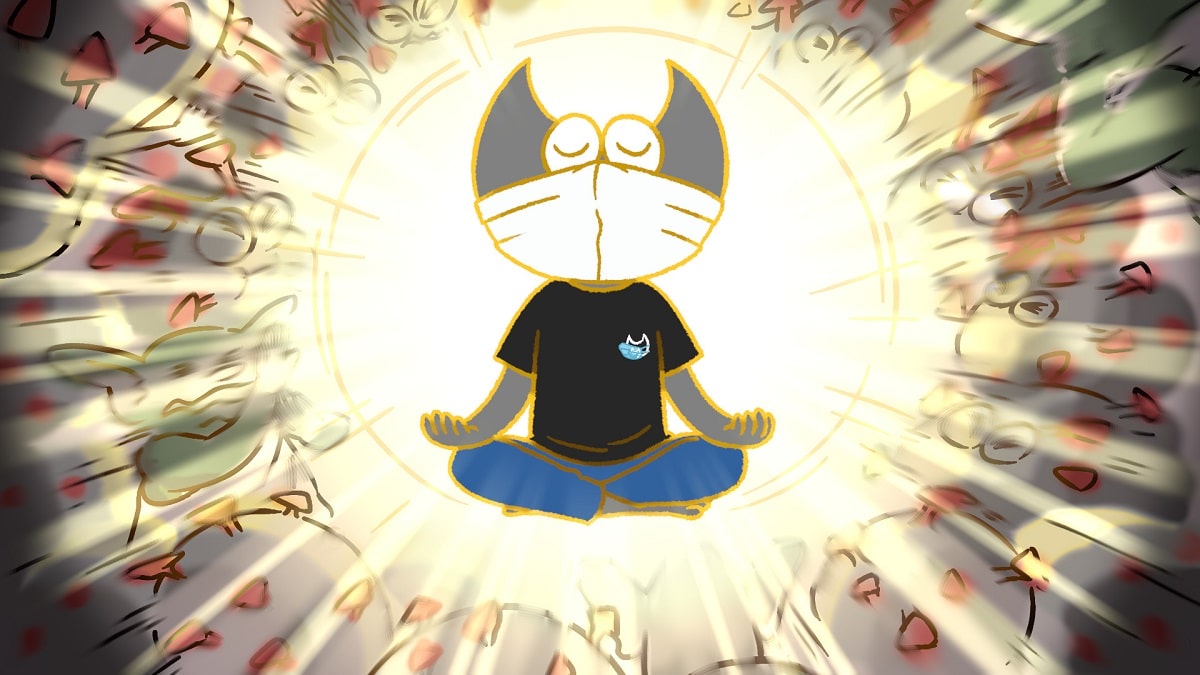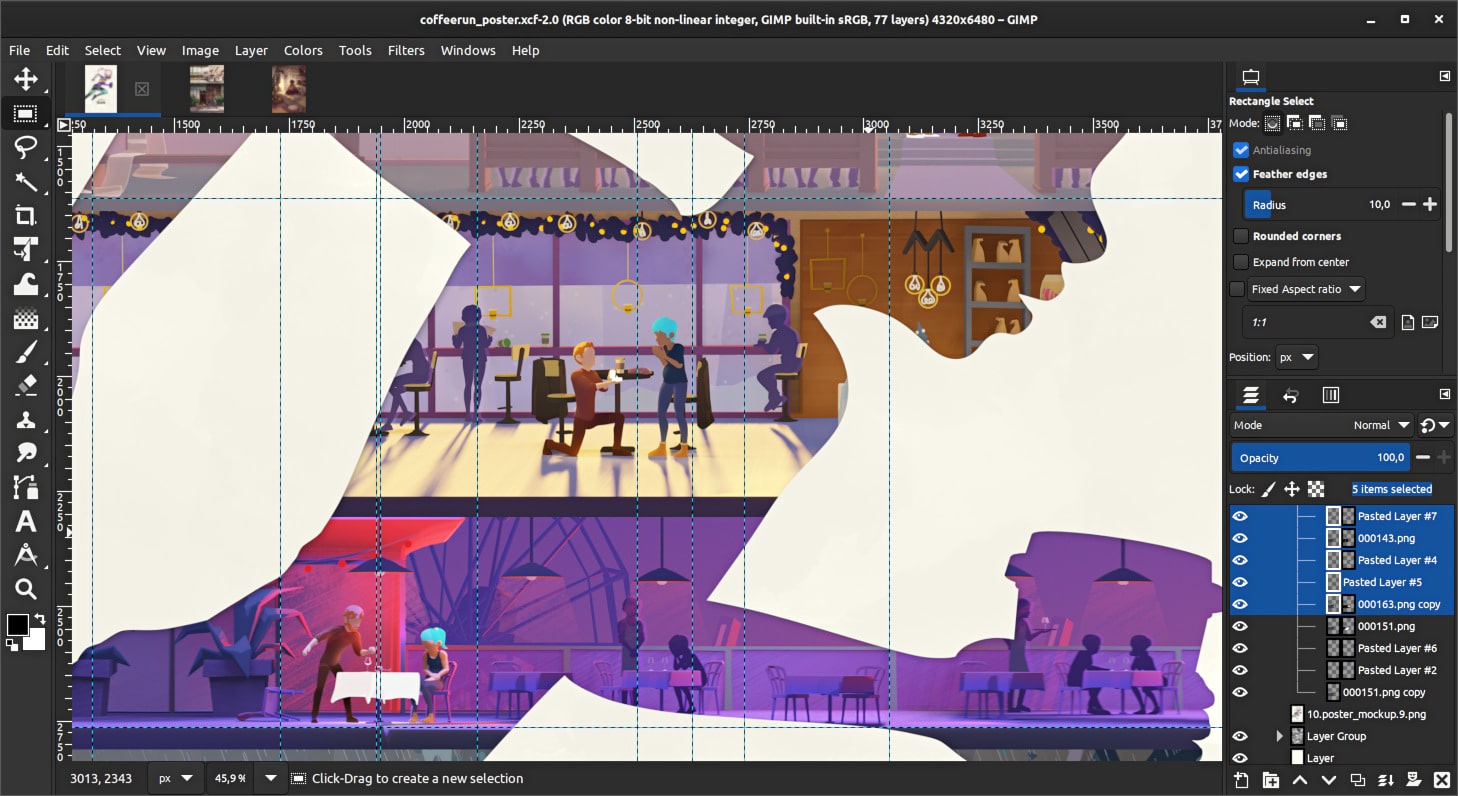
Recently the release of the new version of GIMP 2.99.2 was presented, in which it is proposed to test the functionality of the future new stable branch of GIMP 3.0.
In the new branch, transitioned to GTK3, added standard support for Wayland and HiDPI, the code base was significantly cleaned up, a new API for plugin development was proposed.
In addition to caching implemented, support for selecting multiple layers (multi-layer selection) was added and editing in the original color space was provided.
What's New in GIMP 2.99.2 (GIMP 3.0 Preview)
Transitioned to use GTK3 library instead of GTK2, the design of the interface has been significantly modernized and new widgets have been proposed. For the dialogs, client-side window decoration (CSD, client-side decorations) was applied, in which the title and window frames are not drawn by the window manager, but by the application itself.
The switch to GTK3 also enabled full compatibility with high pixel density displays (HiDPI) and solved problems when working on small and large high resolution displays. GIMP now respects the system scale settings when rendering the interface.
Improved support for advanced input devices such as drawing tablets and light pencils. Added the ability to connect such devices: if in GIMP 2 the tablet had to be connected before starting the program and explicitly activated in the settings, then in GIMP 3 everything is greatly simplified and the tablet or pen can be connected anywhere moment and will be immediately available to draw.
In addition, access to advanced device settings is simplified input. The developers have also experimented with on-screen gestures like pinch, zoom, and rotate, but this feature is marked as non-priority and it is not yet clear if it will appear in GIMP 3.0.
It has been implemented support for a new CSS-based theme format It uses standard GTK3 theme engines and makes it easy to tailor the interface to your needs. Older themes are incompatible with GIMP 3.
As well enhanced support for symbolic icon sets is highlighted, which now automatically adjust to the set foreground and background colors (when switching from light to dark mode, it is no longer necessary to manually change the icon set).

Improved the quality of dark mode, which now includes window decoration elements. It is possible to implement light and dark options in the same design theme, as well as symbolic and colored pictograms at the same time.
It has been implemented native support for the Wayland protocol. There are still unresolved issues in the Wayland environment such as memory leaks, GUI anomalies, and scaling glitches, but these will be fixed when GIMP 3.0 is released as they are marked as release blocks. Not all components have yet been translated to use portals (xdg-desktop-portal).
Added support to select multiple layers (multi-layer selection), which makes it possible to select multiple layers at once using the standard combinations Shift + click to select a range of layers and Ctrl + click to add or exclude individual layers from the set.
All the operations in GIMP apply to all selected layers, allowing you to move, group, delete, merge, and duplicate all selected layers at once.
A new API has been proposed for developing plugins, which is incompatible with old plugins, but according to the developers, there is nothing difficult about migrating existing plugins and it takes 5 to 30 minutes to adapt a typical plugin (documentation on migration will be provided with the release of GIMP 3).
The entire GIMP API is processed through GObject introspection, which allows you to create plugins in different programming languages. In addition to C / C ++, you can create scripts to extend the capabilities of GIMP in Python 3, JavaScript, Lua, and Vala, while the capabilities provided for those plugins are now similar to those for plugins in C / C ++ , and the API is the same for all languages.
Render cache support has been implemented, which stores the results of scaling, as well as manipulations with colors, filters and masks.
Download and install
For installation, a package is available in flatpak format in the flathub-beta repository.
Gimp has been missing the train for decades. Krita is much better even if your goal is illustration and not photography, but it has so many tools like Gimp, layer groups, G-Mic, native raw support ... And of course it doesn't have that clunky childish interface that almost all GTK programs.
In my workflow I develop and apply the important filters with Darktable (despite its quite improvable GTK interface, it is the best development program there is, even better than Phase One or Lightroom), and I edit by zones and layers in Krita . I have the Gimp because you have to have it if you are dedicated to retouching under Linux, but come on, I have it practically as an ornament.
And now they have released GTK 4, that is, GTK 3 is already obsolete technology and Gimp is not even stable any more than in GTK 2.
Really, what a shame of a project. Its developers should take Krita and make a photography-centric fork, but join forces with Krita's folks rather than keep betting on the losing horse.
The Linux ecosystem needs fewer half-finished applications, it needs few but good ones, that do everything necessary and do everything well; unity is needed, not fragmentation; work for a common goal: to offer users alternatives of as much quality or better than those of private ecosystems and spies, and that, if you have few human resources, can only be achieved by joining with people who are working on projects with similar objectives .
Anyway ... Then some will continue to ask the eternal question of "when will the year of the Linux desktop come" ...